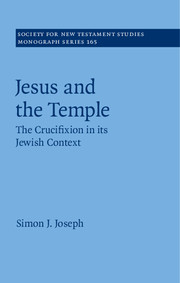Book contents
- Jesus and the Temple
- Society for New Testament Studies
- Series page
- Jesus and the Temple
- Copyright page
- Dedication
- Contents
- Preface
- 1 The Death of Jesus as a Historical and Theological Problem
- 2 The Eschatological Torah
- 3 The Eschatological Temple
- 4 The Temple Controversy
- 5 The Temple Incident: Toward a New Model of Eschatological Restoration
- 6 The Jewish Christian Rejection of Animal Sacrifice
- 7 The Dying Savior
- Summary and Conclusion
- Bibliography
- Index of Ancient Sources
- Index of Authors
- Index of Subjects
- References
Bibliography
Published online by Cambridge University Press: 18 December 2015
- Jesus and the Temple
- Society for New Testament Studies
- Series page
- Jesus and the Temple
- Copyright page
- Dedication
- Contents
- Preface
- 1 The Death of Jesus as a Historical and Theological Problem
- 2 The Eschatological Torah
- 3 The Eschatological Temple
- 4 The Temple Controversy
- 5 The Temple Incident: Toward a New Model of Eschatological Restoration
- 6 The Jewish Christian Rejection of Animal Sacrifice
- 7 The Dying Savior
- Summary and Conclusion
- Bibliography
- Index of Ancient Sources
- Index of Authors
- Index of Subjects
- References
- Type
- Chapter
- Information
- Jesus and the TempleThe Crucifixion in its Jewish Context, pp. 245 - 298Publisher: Cambridge University PressPrint publication year: 2016



